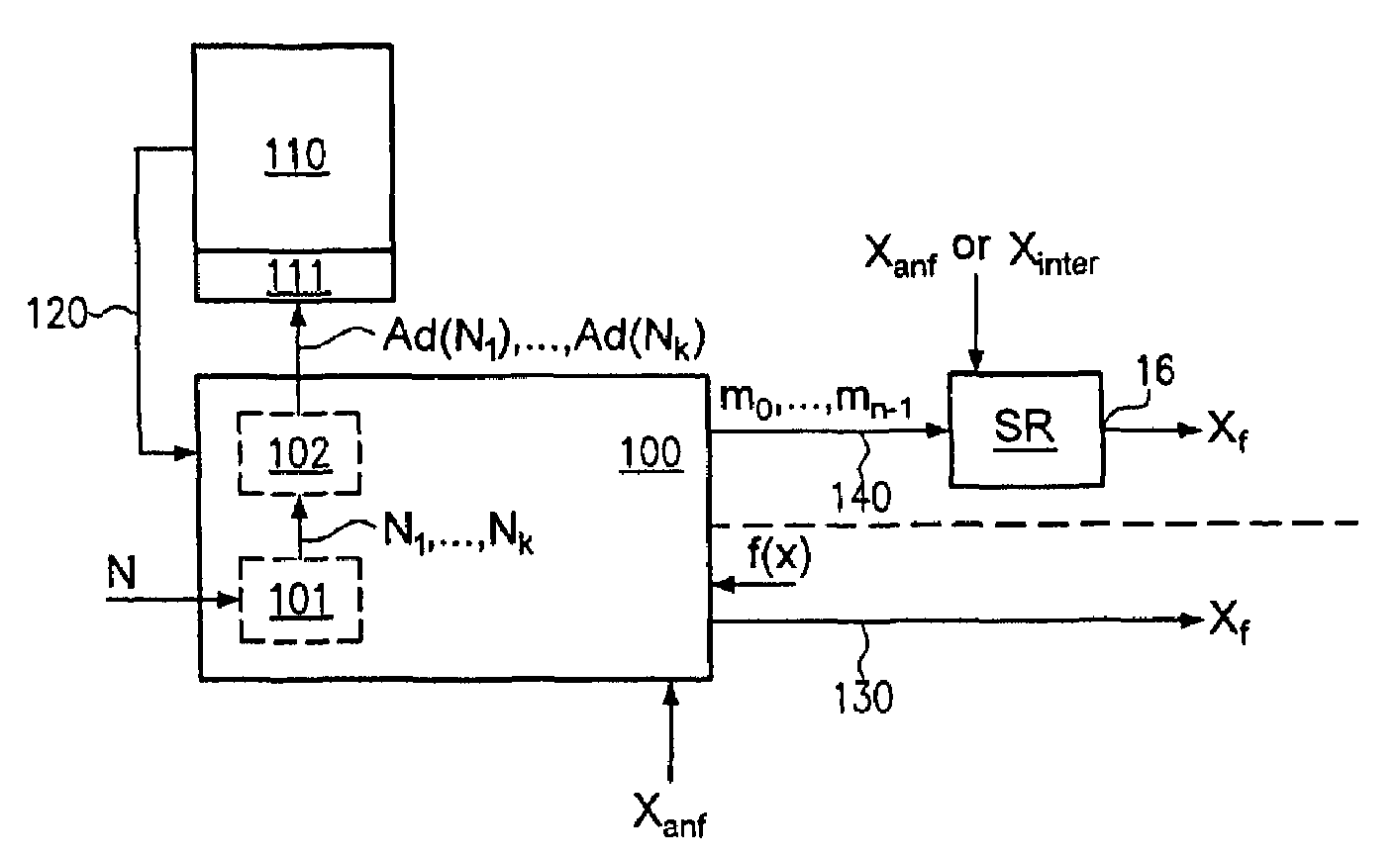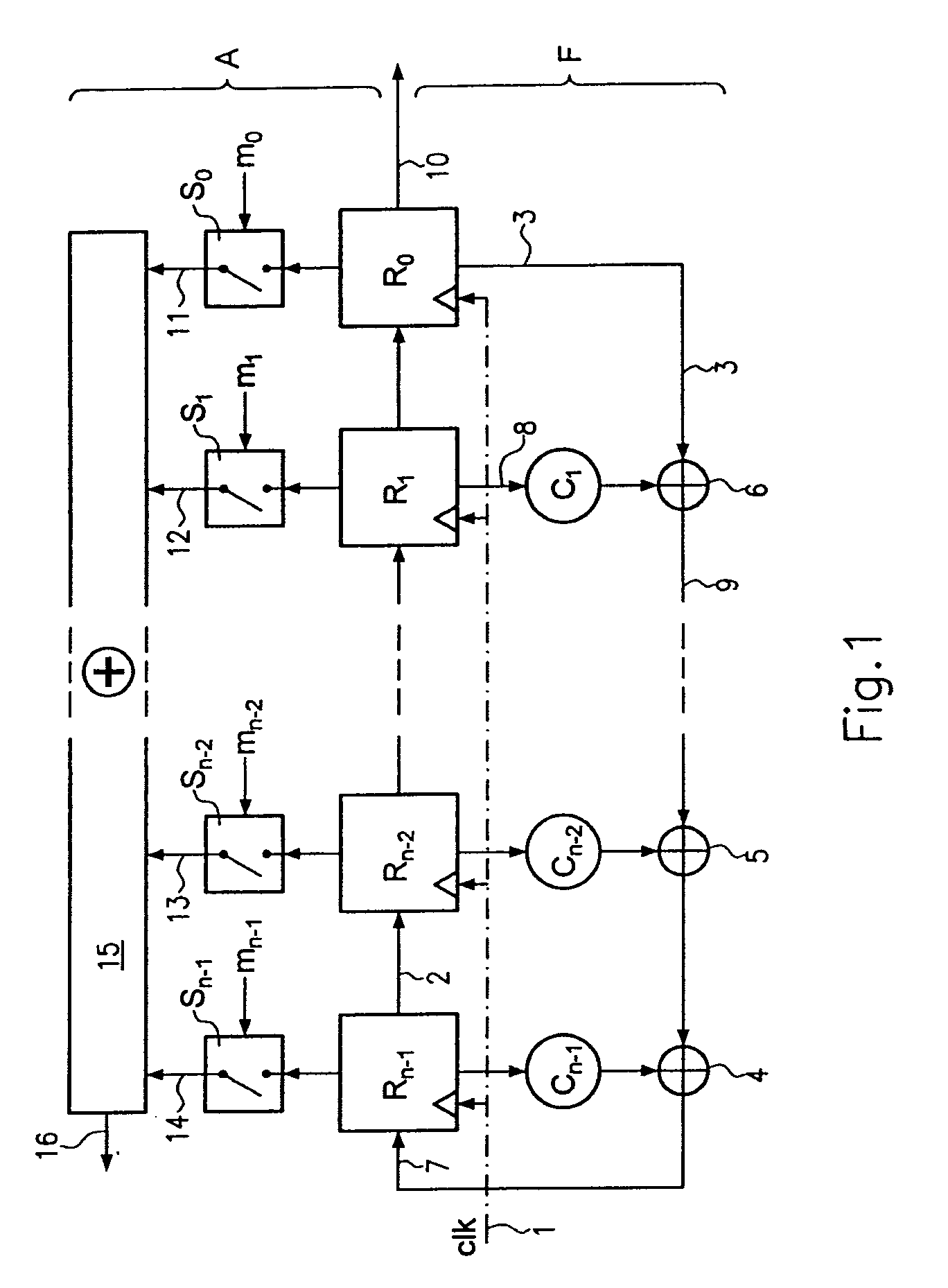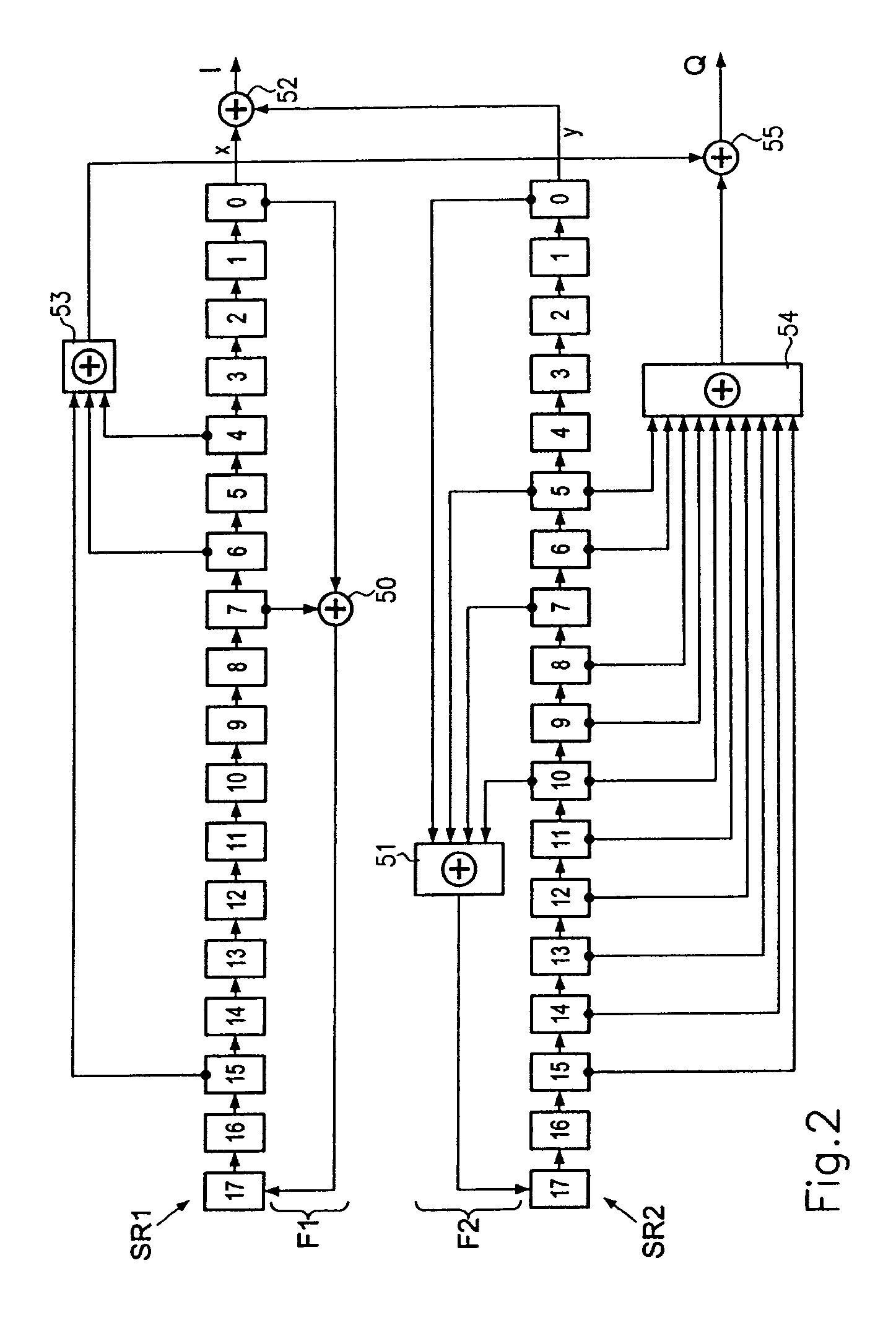Method and device for calculating an iterated state for a feedback shift register arrangement
a technology of feedback shift and register arrangement, applied in the field of method and device for calculating an iterated state of a feedback shift register arrangement, can solve the problems of increasing the difficulty of controlling the overall time sequence, increasing the computational complexity and the amount of time required, and inacceptable delay in transmission and reception, so as to save memory space
- Summary
- Abstract
- Description
- Claims
- Application Information
AI Technical Summary
Benefits of technology
Problems solved by technology
Method used
Image
Examples
example 7
[0111 with L=1 corresponds to the binary splitting basis while ignoring the 4 least significant bits in the 4th group. Only 12 tap masks need to be stored (namely one of each bit) in order to be able to deal with all shifts 0≦N≦65,535 (hybrid). However, 11 polynomial multiplications are necessary in order to calculate the tap mask for N′-fold iteration of the shift register arrangement while taking into account 0≦N-N′≦15 direct shift register operations.
[0112]The complexity for a mask multiplication is dependent on the implementation, which can be in hardware (i.e. in the form of a hardwired circuit) or in software. Software can be used to produce a mask multiplication for tap masks of length n using approximately 5·n elementary bit operations. In the example above (n=18), approximately 90 elementary bit operations would therefore need to be started for one mask multiplication.
[0113]Table 3 compares examples 4 and 5 with the methods known in the prior art (execution of shift registe...
PUM
 Login to View More
Login to View More Abstract
Description
Claims
Application Information
 Login to View More
Login to View More - R&D
- Intellectual Property
- Life Sciences
- Materials
- Tech Scout
- Unparalleled Data Quality
- Higher Quality Content
- 60% Fewer Hallucinations
Browse by: Latest US Patents, China's latest patents, Technical Efficacy Thesaurus, Application Domain, Technology Topic, Popular Technical Reports.
© 2025 PatSnap. All rights reserved.Legal|Privacy policy|Modern Slavery Act Transparency Statement|Sitemap|About US| Contact US: help@patsnap.com



